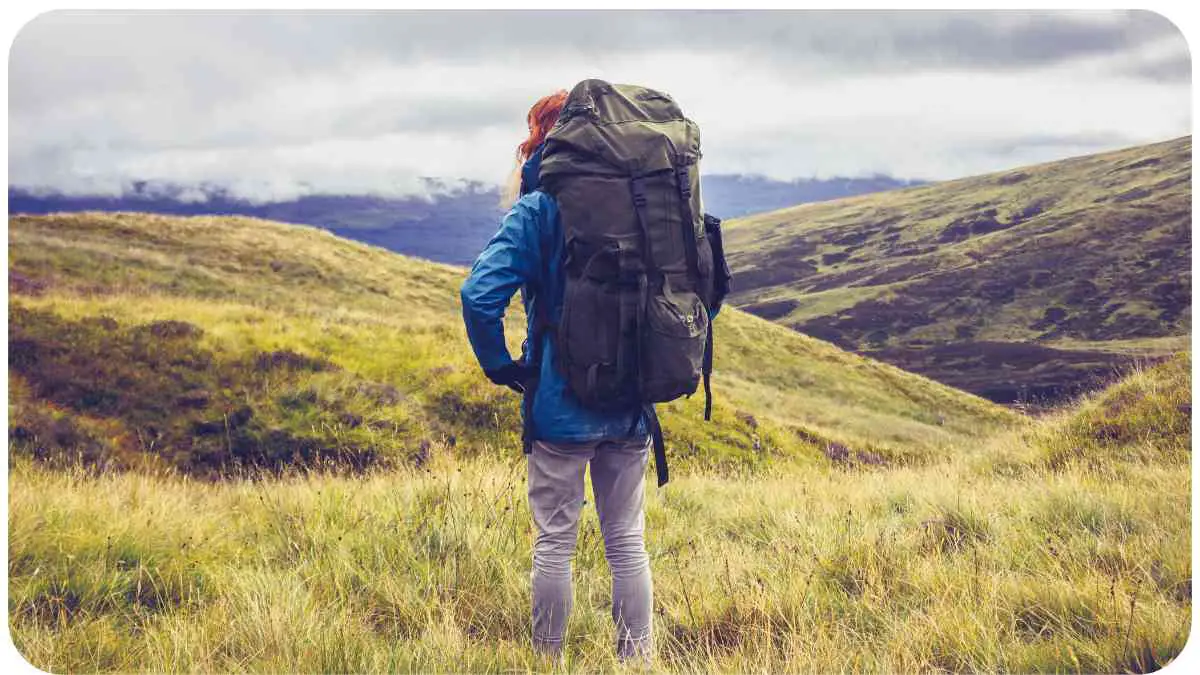Have you ever found yourself in the midst of nature, surrounded by the beauty of the wilderness, only to realize that you’re completely lost? It’s a disorienting feeling, one that can quickly turn an adventure into a survival challenge.
In this article, we’ll explore strategies to recalculate your bearings when you’re lost in the wilderness. Drawing from my own experiences as a seasoned outdoors enthusiast, I’ll share valuable insights and practical tips to help you navigate and survive in the wild.
| Takeaways |
| 1. Thorough preparation is crucial for wilderness adventures. |
| 2. Familiarize yourself with navigation tools and techniques, from maps to GPS devices. |
| 3. Survival skills, including finding water, shelter, and food, are essential for wilderness survival. |
| 4. Maintaining a calm and rational mindset is key when facing challenges in the wild. |
| 5. Continuous learning and seeking advice from experts can enhance your wilderness navigation skills. |
| 6. Rely on reputable resources and communities for valuable insights and knowledge. |
| 7. Getting lost in the wilderness can be an opportunity for growth and adventure. |
2. Understanding the Wilderness
The Challenge of Navigation
Navigating in the wilderness can be far more challenging than following a well-marked trail. It requires a deep understanding of the environment and the ability to read nature’s clues. But fear not, with the right knowledge and tools, you can find your way even in the most remote areas.
Getting lost in the wilderness can be daunting, but fear not! Our guide on finding your way out provides essential strategies and tips for a safe return home.
The Importance of Preparation
Before embarking on any wilderness adventure, thorough preparation is essential. This includes not only having the right gear but also studying maps, weather conditions, and potential hazards. It’s the foundation of a successful journey.
3. Tools of the Trade
Maps and Compasses
One of the most reliable tools for wilderness navigation is a good old-fashioned map and compass. These timeless instruments provide a wealth of information and can keep you on track, even in the absence of technology.
Every adventurer must master wilderness navigation. Explore the essential skills required to confidently navigate through the wild, ensuring a successful and enjoyable outdoor experience.
GPS Technology
In the modern age, GPS technology has revolutionized wilderness navigation. But it’s crucial to understand its limitations and have a backup plan in case your GPS device fails.
Celestial Navigation

For those who crave a deeper connection with the natural world, celestial navigation using the sun, moon, and stars can be a fascinating and effective way to find your way.
Table 1: Navigation Tools Comparison
| Tool | Pros | Cons |
| Map and Compass | Reliable, no battery needed | Requires map-reading skills |
| GPS Technology | Precise, easy to use | Dependent on batteries and signals |
| Celestial Navigation | No equipment needed, educational | Requires clear skies and knowledge |
4. Navigating by Landmarks
Recognizing Natural Features
Nature provides a plethora of landmarks that can guide your way. From distinctive mountain peaks to river bends, learning to identify these features is essential for successful wilderness navigation.
Creating Your Own Markers
In some cases, you may need to create your own markers. This could involve leaving visible signs like stacked rocks or blazes on trees to indicate your path.
Unlock the secrets of wilderness navigation with our comprehensive guide on finding your way in the wild. Equip yourself with the knowledge and skills needed for a secure and confident outdoor exploration.
5. Staying on Course
Using Bearings
A bearing is a specific direction or heading, often measured in degrees from the north. Learning how to take and follow bearings can help you maintain your chosen path.
Dead Reckoning
Dead reckoning involves estimating your current position based on a previously known position and your estimated movement since then. It’s a useful technique when you’re on the move.
Triangulation Techniques
Triangulation involves using landmarks to determine your position by creating intersecting lines of sight. It’s a precise method for pinpointing your location.
Table 2: Navigation Techniques Comparison
| Technique | When to Use | Precision Level |
| Using Bearings | When you have a compass | Moderate |
| Dead Reckoning | While walking or hiking | Low |
| Triangulation | When stationary with clear landmarks | High |
6. Survival Essentials
Finding Water Sources
In a survival situation, access to clean water is paramount. Knowing how to locate and purify water sources can be a lifesaver.
Getting lost happens, but our guide on finding your way home ensures you’re prepared. Discover effective strategies to recalibrate your bearings and navigate safely back to familiar territory.
Building Shelter
Extreme weather conditions can quickly become life-threatening. Learn to build shelters using natural materials to stay warm and dry.
Sourcing Food
While it’s best to carry food with you, knowing how to forage and hunt for sustenance in the wild is a valuable skill.
7. Keeping a Cool Head
Managing Panic
Getting lost can induce panic, which can cloud your judgment. It’s essential to stay calm and think rationally.
Mental Navigation
Your mind can be a powerful tool for navigation. Learn to trust your instincts and stay focused on finding your way.
Avoid the fear of getting lost with our essential navigation tips. Equip yourself with knowledge on map reading, compass usage, and other skills to confidently explore the wilderness.
8. Case Studies in Wilderness Navigation
A Tale from the Rockies
Let me share a personal experience from the Rocky Mountains where I found myself off-trail and disoriented. Through a combination of map and compass navigation and recognizing unique rock formations, I managed to find my way back to safety.
The Desert Dilemma
Navigating in the desert presents its own set of challenges. I’ll recount a desert expedition where GPS technology failed, and I had to rely on celestial navigation to steer my course.
9. Navigating in Extreme Conditions
Winter Wonderland
Navigating in a snowy wilderness requires additional skills and precautions. Learn how to read snow patterns and avoid dangerous terrain.
Swampy Situations
Swamps and marshes can be treacherous to navigate. Discover techniques for safely traversing these waterlogged landscapes.
10. The Importance of Preparedness
Packing Essentials
What you pack in your backpack can significantly impact your wilderness experience. Explore a checklist of essential items to carry on every adventure.
Emergency Communication
In the worst-case scenario, reliable communication can be a lifesaver. Discover the best communication devices for staying connected in remote areas.
11. Learning from Experience
Gaining Proficiency
Becoming proficient in wilderness navigation takes time and practice. I’ll share tips on how to hone your skills and become a confident navigator.
Continuous Improvement
The more you venture into the wilderness, the more you’ll learn. I’ll discuss the importance of ongoing education and skill refinement.
12. Trustworthy Sources for Wilderness Navigation

Books and Guides
There are countless books and guides dedicated to wilderness navigation. I’ll recommend some authoritative resources that have helped me refine my skills over the years.
Online Resources
In the digital age, a wealth of information is just a click away. I’ll point you to reputable websites and forums where you can further your knowledge and connect with a community of outdoor enthusiasts.
13. Conclusion
In the vast expanse of the wilderness, getting lost is a real possibility. However, armed with the right knowledge, tools, and mindset, you can transform a potentially dire situation into an opportunity for growth and adventure.
Throughout this article, we’ve explored various strategies for wilderness navigation, from traditional map and compass techniques to modern GPS technology and celestial navigation. We’ve also delved into survival essentials, the importance of keeping a cool head, and the value of learning from both personal experiences and seasoned experts.
Remember, the wilderness is a beautiful and unpredictable place. Embrace the challenges it presents and view them as opportunities to expand your skills and deepen your connection with nature.
14. Final Thoughts
As we wrap up our journey through the world of wilderness navigation, here are some key takeaways to keep in mind:
- Preparation Is Key: Thoroughly prepare for your outdoor adventures by studying maps, packing essentials, and understanding potential hazards.
- Tools of the Trade: Familiarize yourself with navigation tools such as maps, compasses, and GPS devices, but also learn how to navigate using natural landmarks.
- Survival Skills: Acquire basic survival skills, including finding water, building shelter, and sourcing food.
- Mental Toughness: Maintain a calm and rational mindset, even in challenging situations.
- Continuous Learning: Strive to continuously improve your navigation skills and seek knowledge from experienced mentors.
- Trustworthy Sources: Rely on reputable resources, both in print and online, to expand your expertise.
With these strategies and insights in your toolkit, you’ll be better equipped to navigate the wilderness confidently and safely. So, the next time you find yourself lost in the wild, remember that it’s not the end of your adventure, it’s an opportunity to recalibrate your bearings and embark on a new and exciting journey.
Further Reading
Here are some additional resources that delve deeper into the topic of wilderness navigation and survival:
- Quora – Crucial Steps to Increase Survival Chances
- Explore expert advice and tips on increasing your chances of survival when lost in the wilderness, shared by the Quora community.
- Stack Exchange – What to Do When Lost in the Wilderness
- Discover answers from experienced outdoor enthusiasts regarding the first steps to take when you find yourself lost in the wilderness.
- Tech Writer EDC – How to Navigate in the Wilderness
- Read a comprehensive guide on wilderness navigation, including advanced techniques and expert insights to enhance your skills.
FAQs
Q: What should I do if I get lost in the wilderness?
A: First, stay calm and assess your situation. Try to retrace your steps if possible or use navigation tools to find your way back. If you can’t determine your location, stay put, signal for help, and prioritize your survival needs.
Q: What are the essential survival skills for the wilderness?
A: Essential survival skills include finding water sources, building shelter, sourcing food, and maintaining mental resilience. These skills are crucial for staying alive in the wild.
Q: How can I improve my wilderness navigation skills?
A: To improve your navigation skills, practice using maps, compasses, and GPS devices regularly. Learn to read natural landmarks and terrain. Seek guidance from experienced mentors and explore educational resources.
Q: Are there any recommended books for wilderness navigation?
A: Yes, there are several excellent books on wilderness navigation, such as “Wilderness Navigation” by Bob Burns and “Be Expert with Map and Compass” by Bjorn Kjellstrom. These books provide in-depth guidance on the topic.
Q: What are some common mistakes to avoid when lost in the wilderness?
A: Common mistakes include panicking, wandering aimlessly, and neglecting basic survival needs. It’s essential to stay calm, conserve energy, and prioritize shelter, water, and signaling for rescue.

Hi! I’m Hellen James, and I am the founder of Unified Survival. I have a deep passion for the wilderness and everything that goes along with it. I’ve been hiking since I was a child, and I grew up camping in state parks all over the country. But it wasn’t until recently that I learned how to survive in the wilderness.

